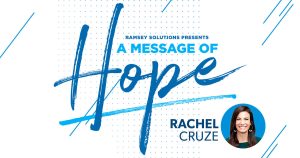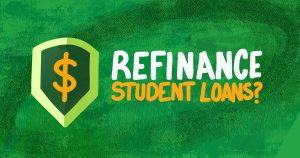If you’ve owned your residence for a while, you’ve probably built up a valuable amount of home equity you can tap into and use as cash. Three popular ways to draw equity from your home include a reverse mortgage, a home equity loan or a home equity line of credit (HELOC).
All three financial instruments let homeowners borrow against the equity in their home and use the funds for any purpose, from paying off their high-interest credit cards to remodeling a bathroom.
But they do so in different ways. As a result, one of these options may be more suitable than the others for your needs and finances. Before deciding between a HELOC vs reverse mortgage vs home equity loan, it’s worth comparing how each works and the advantages each one has.
Home equity loans, HELOCs and reverse mortgages: What’s the difference?
Reverse mortgage
As the name implies, a reverse mortgage is the opposite of a regular mortgage: Instead of the individual borrowing money from a lender, then paying it back until they own the home, the lender pays the borrower — either in a lump sum, line of credit or monthly installments — in return for a stake in the home.
The borrower is not required to make any repayments on the loan while they occupy the home. The loan does accrue interest, which the borrower can choose to pay off monthly or have added to the loan balance. The mortgage comes due when the borrower chooses to move out, sells the home or dies. Then the lender either is paid back in cash or takes possession of the home. (There are exceptions for a surviving spouse, provided they were in residence when the reverse mortgage was taken out.)
Homeowners generally must be 62 or older to qualify for a reverse mortgage. They must continue to maintain the home and pay property taxes on it.
Reverse mortgage pros
- Provides tax-free income to be used for any purpose
- Allows you to stay in your home and “age in place”
- No monthly repayments required
Reverse mortgage cons
- Requires a substantial amount of home equity or paid-off mortgage
- Outstanding loan amount can snowball if you don’t repay interest at least
- Loan interest is usually not tax-deductible
- Upon borrower’s death, usually has to be repaid in large lump sum or else home goes to lender
Home equity loan
A home equity loan is often called a “second mortgage” because many homeowners take one out in addition to their primary mortgage (though those who own their home in full can also tap their ownership stake in this way). A home equity loan uses your home as collateral. The terms are usually between five and 20 years, and the amount that can be borrowed is typically limited to up to 85 percent of the home’s combined loan-to-value ratio.
Homeowners receive a lump sum that they pay back in equal monthly payments at a fixed interest rate, which means they don’t have to worry about interest rates rising. This can be helpful for people who are looking to budget a specific amount to repay each month. In addition, the home equity loan’s rates may be lower than an unsecured personal loan’s, because the home acts as collateral, making it less risky for the lender.
Home equity loan pros
- Fixed interest rates, often lower than personal loans
- Consistent monthly repayments
- Long repayment timeline
- Interest is tax-deductible if loan is used for home improvement
Home equity loan cons
- Risk of losing your home if you default
- Imposes strict lending criteria
- Has closing costs and fees
- May take a while to obtain, similar to a mortgage
HELOC (home equity line of credit)
A home equity line of credit (HELOC) gives a homeowner the ability to borrow money from the equity in their home and operates like a credit card: A person can tap their credit line if and when they need the funds, up to a specified amount. During the first part of the HELOC (called the draw period), you can draw down money from the loan and make interest-only payments, which helps if you’re facing a tight budget. The draw period usually lasts five or 10 years.
Afterward, you enter the repayment period, which generally lasts 10 to 20 years. During this phase, your payments will include both interest and principal and they may be significantly higher than the payments you made during the draw period. The interest rate on a HELOC is generally variable, which can lead to higher payments during some months if interest rates spike, or lower monthly payments when rates go down.
HELOC pros
- Interest may be tax-deductible
- Borrow money as needed, paying interest only on actual withdrawals
- Interest-only payments possible during initial, draw period
- Competitive interest rate, compared to personal loans/credit cards
HELOC cons
- Payments may increase significantly during repayment phase
- Fluctuating rate, so payments vary and vulnerable to increasing interest rate trends
- Risk of losing your home, as it’s collateral for the loan
What to consider when choosing between a reverse mortgage, home equity loan or a HELOC
As with most financial instruments, each of these options has its pros and cons.
Tax advantages
If you want some tax savings with your financing, the advantage definitely lies with home equity loans and HELOCs.
“HELOCs and home equity loans can be tax-deductible for homeowners, but the rules around their tax deductibility have changed in recent years,” says Irvine, Calif.-based CPA Emily Egkan, a senior manager with the accounting firm Withum.
Once you could deduct an almost unlimited amount on loans used for any reason. That changed as of Dec. 15, 2017. Currently, single and joint filers who take out a home equity loan are allowed to deduct interest on up to $750,000 worth of qualified loans; those married filing separately can deduct interest on up to $375,000 worth of loans.
Also, the loan has to be for a specific type of purpose. The tapped equity money must be used to “construct, or substantially improve an existing house” — the house or home that was used to secure the loan. Substantial improvements are those that add value to the home, prolong its useful life or adapt it to new use. Lastly, to be eligible, you’ll need to itemize your deductions when you file your taxes.
You might be able to take a deduction on reverse mortgage interest, in the same way you can on traditional mortgage interest. “However, it’s important to note that the amount of interest on a reverse mortgage that is tax-deductible may be limited,” Egkan says. Reverse mortgage borrowers can opt not to pay interest during the loan’s term, but just add it to the balance. If they do, the mortgage’s accrued interest (including the original issuance discount) is not tax-deductible until the loan is paid in full, according to Egkan. (You can’t deduct interest you didn’t pay.)
The reverse mortgage is also likely to be subject to the same debt limits and home-use rules as other loans and credit lines. So, no tax break for an elderly couple who took one out just to make daily ends meet or help a grandchild with college tuition.
Credit score and income
You’ll likely need a credit score of 680 or higher to be eligible for a home equity loan or HELOC. But a credit score of between 620 and 679 may also be enough to qualify, depending on the lender.
“The credit score and income requirements will vary for reverse mortgages,” says Brad Baker, vice president of Underwriting and Capital Markets for Equity Now, a mortgage lending and servicing company in Mamaroneck, New York. “In general, HELOCs and home equity loans have more stringent credit and income requirements compared to reverse mortgages.”
Eligibility requirements
To use any of these financing options, you’ll need to meet certain criteria.
To be eligible for a reverse mortgage — either a federally-backed home equity conversion mortgage (HECM) or a private reverse mortgage — you usually must be a homeowner age 62 or older. (A small number of lenders offer private reverse mortgage options to those as young as age 55.) Additionally, the home you are borrowing against must be your primary residence. You have to own the home outright or have a very low balance due on it when applying for a HECM reverse mortgage. A 50 percent equity stake is typically the minimum.
If you still have a mortgage balance, be prepared to pay it off when closing on the reverse mortgage. Also, you can’t be delinquent on any federal debt or use reverse mortgage funds to pay off federal debt. Your home must be in good shape, too, and you have to agree to receive counseling from a HUD-approved reverse mortgage counseling agency.
To qualify for a home equity loan or HELOC, you’ll usually need a debt-to-income (DTI) ratio of no more than 43 percent, a credit score of 680 or higher (although it is worth noting that many HELOC lenders are ok with as little as 620), a history of punctual debt repayments, a minimum of 15 percent to 20 percent equity earned in your home and a reliable and sufficient income source. Your home will generally be appraised by the lender, and the value set on it will determine the worth of your ownership stake and how much of it you can actually tap.
Disbursement
Wondering when you’ll get your money? The answer will vary depending on which of the three financing options you choose.
“Home equity loans disperse the full loan amount in a lump sum at closing. HELOCs allow the borrower to draw the funds as needed over time, as you would a credit card. Reverse mortgages usually disperse a fixed amount every month to the borrower, similar to an income stream,” says Baker.
However, Christina McCollum, producing market leader for Churchill Mortgage, notes that your reverse mortgage lender may offer several disbursement options. “You can take a one-time lump sum, a lump sum and deferred payments, or just deferred payments,” she says.
Repayment terms
The terms and timeline for paying back what you borrow will depend on the loan or line of credit.
“Home equity loans begin collecting payments immediately, just like a regular first mortgage, via a fixed amount every month,” Baker continues, noting that repayments cover both principal and interest. “HELOC payments will become due once money is actually drawn on the line, and the payment will be based on the total amount drawn thus far. During the HELOC repayment period, you can no longer access funds and you are required to make both interest and principal repayment over a 10- to 20-year period.”
According to Baker, a reverse mortgage does not require any payments monthly, “but your debt comes due at the end of the loan term. Reverse mortgage debt is typically repaid using proceeds from selling the home.”
Closing process
No matter which of the three financing options you choose, you must go through the closing process (similar to when you took out a mortgage) and there are closing fees to be paid. With a home equity loan or HELOC, closing costs typically range between 2–5 percent of the total loan amount — though in some cases, they can be as little as 1 percent. Closing costs typically cover such expenses as origination fees, appraisal fees, credit report fees, title search fees and legal fees.
Reverse mortgage closing costs tend to be pricier than other financing options, but the exact costs vary by the lender and loan program you select.
Which option is best for you?
When choosing between a HELOC vs. reverse mortgage vs. home equity loan, your best option will depend on many factors.
“If you are a senior who needs to supplement your income to live comfortably, don’t intend to move, and don’t have heirs who want to receive the property free and clear, a reverse mortgage may be your best choice,” says Lyle Solomon, a personal finance expert and attorney with Oak View Law Group in Rocklin, Calif. “In this situation, a reverse mortgage could relieve your financial burden and provide thousands of dollars to aid with living expenses, healthcare costs and other bills.”
On the other hand, if you need to pay for a high-cost home improvement/repair project or want to consolidate and pay off high-interest debt, a home equity loan could be the ideal selection.
“A home equity loan provides an affordable solution for a home renovation project or to eliminate high-interest debt,” Solomon adds. “The lump sum payment you get from a home equity loan could also come in handy to make one large transaction, and home equity loans offer lower interest rates than credit cards and personal loans.”
And remember, f the expense involves any home upgrades or rehabs to your home, using the home equity loan or credit line can also reap you some tax deductions.
When a reverse mortgage is best
For those who expect to stay in their home a long time, a reverse mortgage can be a good choice and justify the expense of the associated closing costs. For instance, if you are 65 and hope to stay in your home forever, aging in place, a reverse mortgage could make sense.
Yet another case in which a reverse mortgage may make sense is if you need extra cash to cover your everyday living costs. If you didn’t save enough money for retirement, a reverse mortgage can help you put cash in your pocket to get by. Bear in mind, though, that it’s not free money — the payments you receive, and the interest they accrue, all get added to the amount that must be repaid when the borrower permanently vacates the house, sells it, or dies.
When a home equity loan is best
If you need a fixed or specific sum of money to cover a significant expense, such as a single large purchase, renovations with a set price tag, or a specific amount in credit card debt, a home equity loan can be a good choice.
In addition, if you have a significant amount of high interest credit card debt or personal loans that you want to pay off, a home equity loan may be the right option. Home equity loans typically offer more competitive interest rates than unsecured loans.
When a HELOC is best
If you have ongoing renovation expenses and are unsure of the final price tag, a HELOC that you can continue to access as you need it can make sense. “For instance, a HELOC can help you use your home equity for each project in turn if you have three home improvement jobs you’d like to finish over five years,” says Solomon. A HELOC might also work to cover several large bills over a prolonged period, like college tuition.
HELOC interest rates are slightly higher than home equity loan rates as of July 2024 (although they fluctuate, remember). In addition, if you like the idea of being able to spend as you go and only pay back (and pay interest on) what you’ve actually borrowed, a HELOC can be a good choice.
Next steps
If you’re considering tapping into some of your home equity, you’ll first want to decide which of these products is right for you. But no matter which one you choose – a HELOC, reverse mortgage or home equity loan – you’ll need to gather your important documents like your home’s title, tax returns and proof of income. Having those documents handy will help expedite the loan process.
Comparing loan offers — at least three, preferably from different sorts of lenders — is always a good strategy. Lastly, if you are considering a reverse mortgage, consult with a nonprofit agency that does reverse mortgage counseling before entering into a loan agreement. The National Foundation for Credit Counseling (NFCC) offers access to NFCC-certified Home Equity Conversion Mortgage (HECM) counselors who can help seniors make the best choice for their circumstances.
FAQs
-
All mortgage products have a closing period, and depending on the lender and other factors, some loans may take longer to close than others. For example, a reverse mortgage could take up to 45 days to close, a HELOC could take upwards of two to six weeks, and a home equity loan could take two weeks to two months. These are standard, traditional periods; some online lenders are trying to speed things up, promising approvals within days and funds within a week.
-
While each option includes closing costs, these charges for a home equity loan or HELOC can equate to 1 to 5 percent of the total loan. With a home equity conversion mortgage (HECM), a lender is restricted from imposing fees exceeding $2,500 or 2 percent of the initial $200,000 of the home’s value, plus an additional 1 percent on amounts exceeding $200,000; there’s also a maximum cap of $6,000 for the entire origination fee for HECMs. -
First, the good news–if your credit needs some work, you will likely still qualify for a reverse mortgage (if you meet other financial requirements) because you do not need to have a specific income or credit score to qualify for one. Most lenders will check your credit history, which needs to be in good order, but a particular score isn’t required.However, getting a HELOC or home equity loan may be difficult with a lower credit score. You will likely need a score of at least 620 to 680 to qualify for a HELOC or home equity loan. Of course, the the higher your credit score, the better your interest rate.There is another option: a home equity sharing agreement. It’s an arrangement between a homeowner and a professional investor: The latter gives the former a lump sum — technically, an investment, not a loan — in exchange for a piece of the home’s (presumably appreciated) future value. Faster and easier to obtain than traditional equity financing, these agreements do cut into proceeds from selling the home.
Additional reporting by Maya Dollarhide
Read the full article here










